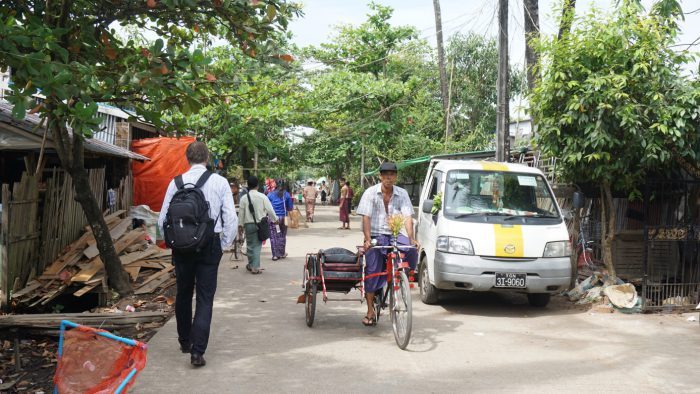BlueOrchard regularly hosts field trips providing insights in the sector of impact investing. The objective is to get first-hand information and meet local governmental institutions, partners as well as borrowers.
The last BlueOrchard trip was hosted in Myanmar, during four days in November. Myanmar is now viewed as one of the countries with the greatest economical potential in Southeast Asia. However, access to financial service remains very limited with more than 80 percent of Myanmar’s population still lacking formal financial service.
Let’s take a closer look at this unforgettable journey and discover the amazing work of local actors who are unlocking the potential of this country and transforming the life of thousands of entrepreneurs and communities.
Arrival Day
Our diverse group of investors travelling from Europe and Asia joined BlueOrchard staff on Tuesday night in the vibrant and fast-changing capital of Myanmar.
After an enlightening presentation on the impact investing industry from our Chairman Peter Fanconi and an overview of regional market dynamics from our Regional Manager Nick Gandolfo, we were all impatient to learn more about the outcomes of microfinance. We continued the discussion at a beautiful place, an ancient colonial house converted into a great local food restaurant, to get a taste of one of Myanmar’s signature dishes: the tea leaves salad.
After a great dinner where we had the chance to get to know each other, we were ready to embark into a memorable journey in the heart of Myanmar. In only a few days, this field trip would give us the unique opportunity to witness the entire microfinance value chain in the country and meet with key actors from microfinance institutions. From group lending to individual entrepreneurs, impact investing becomes more than an idea: it is a reality!
Day 1
Our first meeting took place at one of the leading microfinance institution in Myanmar, DAWN. Initially founded in 2002 as the microfinance program of Save the Children Myanmar, DAWN is now operating as an independent microfinance company and provides a wide range of financial services to the underserved in Myanmar, with a specific focus on low-income female micro-entrepreneurs.
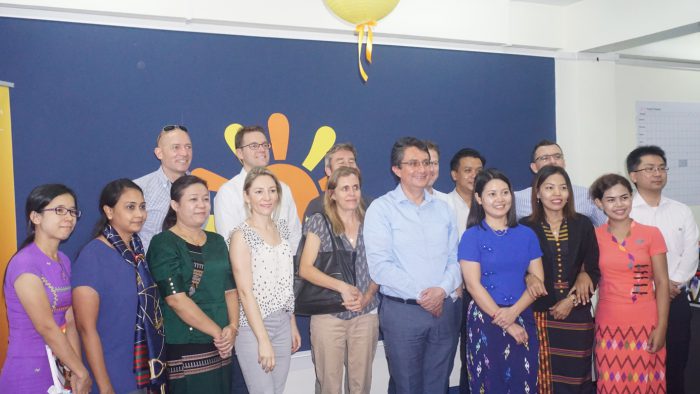
We were warmly welcomed by DAWN’s senior management and its dynamic team of loan officers, branch managers, finance assistants, audit and legal department representatives. Removing our shoes at the entrance – a tradition in Myanmar – instantly made us feel almost at home. During the morning, we got to learn the microfinance value chain but also understand how everything works on the ground. The CEO shared his views on the company’s accomplishments and his plans for the future.
The company itself evolved from a donor-funded program to a financially sustainable for-profit microfinance company – the third largest microfinance institution in Myanmar by number of borrowers. It was also impressive to learn the importance of a lender like BlueOrchard in this transition. In March 2017, the company became a standalone microfinance institution and grew exponentially ever since, now reaching more than 86’000 from 26’000 in just a year. Dawn keeps on expanding its access to affordable, high quality financial services and improves the lives of the families they serve.
Our next meeting brought us to VisionFund Myanmar, which is part of World Vision, one of the largest development organisations in the world, active in 100 countries for over 60 years. VisionFund itself is active in around 30 markets. The organisation’s key objective is to improve the lives of children and their families through long-term commitment to their communities.
We met with the CEO, the CFO and their staffs, who first shared with us an insightful overview of the context for climate investment in Myanmar. It was instructive to listen to insiders’ perspectives on how Myanmar, a highly centralized and regulated economy, is slightly transitioning from decades of conflicts and military rules regime. The CFO described VisionFund’s strategy as a mission to help poor and vulnerable clients to become more resilient and independent by providing them with various income streams as well as training and education. In a country where roughly 80% of the population has very limited access to finance and where more than 50% of the population live with less than 2$ per day, the activities of an institution like VisionFund have a real impact. Its key objective is not only to provide affordable access to finance to help entrepreneurs to self-start their business and increase their income, but also to ultimately help them start saving money.

Our journey continued with a brief visit in the first established VisionFund branch where we met loan officers and got familiar with the loan application paperwork that borrowers need to fill out when applying for a loan. We were informed that while all operations are paper and cash based, one of the key focus for VisionFund is to slowly implement the digital transition and switch to tablets and mobiles to collect instalments. However, the majority of the work still needs to be conducted on sight and we were about to realize that during our afternoon visits at entrepreneurs’ houses. During this process, the key ingredient is to ensure a strong and trustful relationship between the lenders and the borrowers.
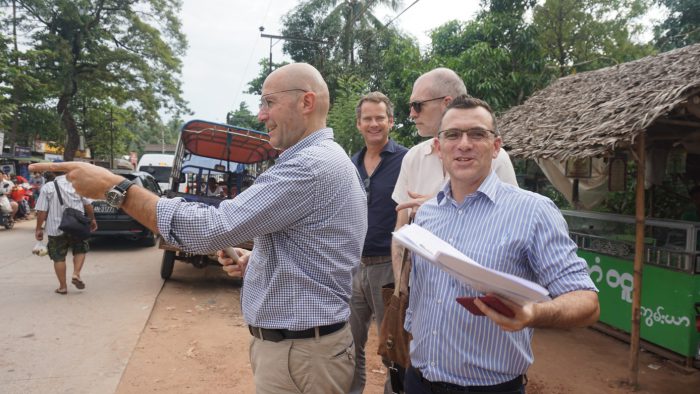
After a brief lunch in tropical Yangon’s countryside, we travelled for about 45 minutes to the Hmawbi township of outer Yangon, where we visited local entrepreneurs who had borrowed micro-credits for a diverse range of businesses, including a goldsmith shop, a pigs farm and fields dedicated to the cultivation of chrysanthemums and flowers. It was striking to see how life changing microfinance had been for these hard-working entrepreneurs.
After this very enriching day, we got back to the hotel before heading up to a very nice restaurant where we shared our dinner with Paul Seger, Ambassador of Switzerland to Myanmar. This setting was a rare opportunity to get Mr. Paul Seger’s views and experience on diplomatic relations between Switzerland and Myanmar. Mr. Seger explained how the government, civil servants and all political parties work together to alleviate poverty and ensure a peaceful transition to a democratic economy and society.
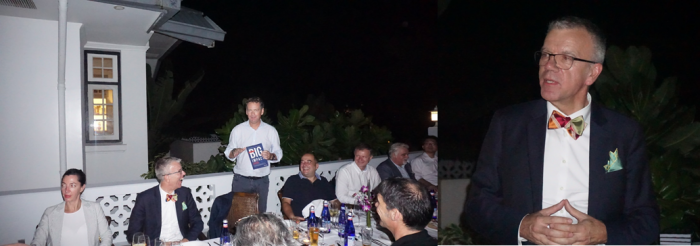
Day 2
Early in the morning of day two, we hit the road again accompanied by local staffs of DAWN, to visit a DAWN branch office. This visit was a way to understand how branch office functions, and how it helps to strengthen lending practices and borrowing. We realized the importance of the relationship between borrowers and loan officers, as borrowers almost consider their loans officers as a family members.
We were then invited to join a group of women in a village that had taken a group loan. Indeed, women play a crucial role in microfinance in Myanmar, with more than 90% of the loans lent to women only. The main reason why microcredit effort is concentrated on women is because women make better use of small loans than men. Women spend their money to help their family and have a better track record when it comes to repayment.

During this group lending activity, we really felt as if we were part of the group. We were seating in the house of one of the borrowers, where 25 women gathered for their weekly loan repayment. We discussed with many of these women and understood how group lending serves shared support among women and triggers a sense of communal responsibility for the payback of loans. It was fascinating to see that these women were the heart of the community. We could feel how dedicated they were in providing basic income and job opportunities for the people in the village.
As we continued our visit to meet business owners, we got spontaneously invited to join the local population for lunch. This was just one of numerous examples of the well-known hospitality and kindness of people in Myanmar.
During the afternoon, we visited an entrepreneur who owns a small factory of children clothing and took this opportunity to bring back colourful presents to our home country. We met some local entrepreneurs who had borrowed micro-credits for woodcarving and others working in a small grocery shop with an all range of daily use products.
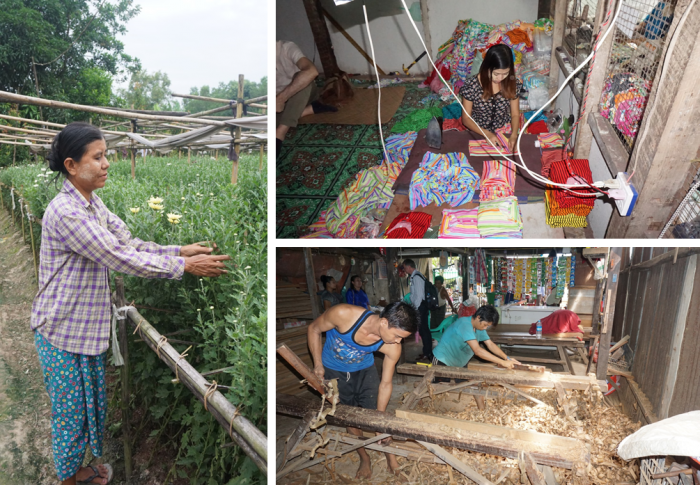
We returned to our hotel for final goodbyes before participants began their preparations to return home the following day.
Conclusion
Thanks to BlueOrchard and our local partners, this field trip was a truly unique experience to meet local entrepreneurs and understand how mircrofinance and impact investing really work. Our partners highlighted the value of BlueOrchard’s investment activities and we were all impressed by the fantastic work in Myanmar. Through visits, meetings and discussions with various actors of the microfinance value chain, we could really see the impact of microfinance on poverty reduction, well-being, education and living standards. In a modern world shaped on individualism and uncertainty, we brought home concrete results, hope for the future, and most importantly the smile, willingness and kindness of the people in Myanmar. We met real heroes, who just needed a helping hand.
By Laura Kaliszewski
